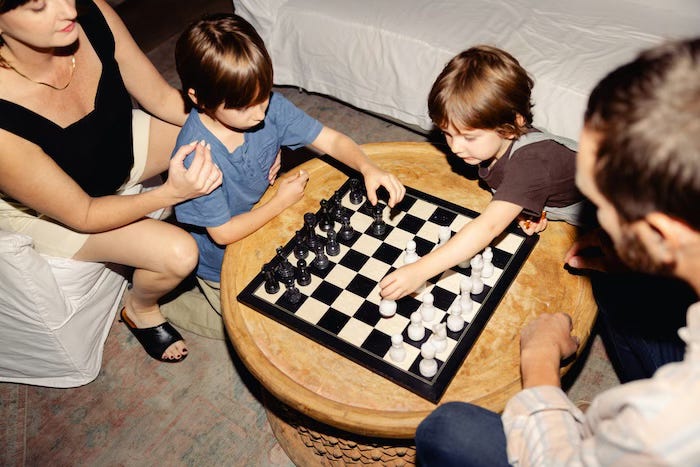He certainly had a flair for drama.
In fact, he’d crafted an entire “smoking gun” reveal — a true “gotcha!” moment.
It caught us — a handful of dorky high school students — completely by surprise.
Perhaps we were just naïve, but I don’t think anyone could have foreseen this particular mic drop.
Allow me to set the stage.

We were in the piano intensive of a summer music program.
On the last day, our middle-aged piano instructor read an entire chapter to us from a just-released book, Eloise Ristad’s A Soprano on Her Head (1981).
Four years before Oliver Sacks’s The Man Who Mistook His Wife for a Hat — and seventeen years before the term “neurodivergence” first appeared in The Atlantic — Ristad wrote about students whose musical brilliance often masked hidden perceptual differences.
One chapter focused on Roger, a sight-reading prodigy.
Roger astonished his teachers with his speed and fluidity but baffled them because, even though he could play almost everything perfectly at first glance, he somehow couldn’t memorize a piece or analyze it.
It was absolutely fascinating, although why our teacher had decided to share it was a mystery.
That is, until he finished, closed the book, and said simply:
“I am that boy.
I am Roger.”

Sight-reading is the ability to perform a piece of music at first sight — that is, to play (or sing) it accurately without prior rehearsal, simply by reading the written notation in real time for the first time.
To be a good sight reader, various skills are required.
You obviously need to be musically literate, fluent in all musical symbols.
Having a strong sense of pattern recognition is helpful, since it’s much easier to recognize structures than to read one note at a time.
Both coordination and concentration are required as well, since you’re instantly translating complex visual information into movement and sound.
It’s a specific skill set that even great musicians may or may not have.
The legendary pianist Glenn Gould was apparently an erratic sight reader (but could absorb massive works after minimal exposure).
In the same way, George Gershwin and Elton John fall into another category of astonishingly fast learners by ear but aren’t great at reading sheet music.
I’ve always been fascinated by this skill and — since the theme I’m exploring this month is Awkward Beginnings, meditation HERE — I’m excited to dive into those musically clunky starts.

Some of my knowledge about Awkward Beginnings comes from having taught piano lessons myself.
My first “serious” student was when I was a few years out of college, tutoring my employer’s nine year-old on the keyboard.
Bright and sassy, our lessons were the stuff of sitcoms, composed of lots of exasperated sighs (on both ends), occasional bribes, and some delightful breakthroughs.
Flash forward to decades later when a neighbor sincerely asked if I would teach him as well.
He loved music and wanted an outlet, some kind of release from his high-pressure days at the hedge fund.
To this day, I’m fascinated that — brattiness aside — the nine-year old was much easier to teach.
His ability to focus was better — and so was his attitude — but somehow the nine-year old’s “who cares?” attitude trumped that.
She had no attachment to being good at what we were doing.
She didn’t really care about making mistakes.
She might get bored but was never really frustrated with clinkers.
The hedge fund guy’s identity, on the other hand, was deeply invested in getting the right answer, ideally before anyone else.
Spending his days where billions of dollars were on the line, he couldn’t quite detach from his mindset of consequence.
In short, the nine year-old was completely cool with Awkward Beginnings, while he — two decades older — just wasn’t.

I’m launching a new, light-touch coaching program this week.
One thing that’s really inspired what I’m creating is this passage from Anne Lamott’s Bird by Bird.
It’s one I’ve quoted and paraphrased for countless clients — and many friends in shaky moments:
E. L. Doctorow once said that “writing a novel is like driving a car at night. You can see only as far as your headlights, but you can make the whole trip that way.”
You don’t have to see where you’re going, you don’t have to see your destination or everything you will pass along the way.You just have to see two or three feet ahead of you.
This is right up there with the best advice about writing, or life, I have ever heard.
Especially when things are darkest, knowing you can move forward — even if you see only those two or three feet ahead saves the day.
I want this new program to be the lighthouse for awkward beginnings.

“Roger” — it was clear now that the name was an alias the author had chosen for our teacher — is indeed a fascinating story.
Ristad writes that, like many of us,
“Roger was indeed handicapped by the very skill that was so impressive.“
Because he was so spectacular at sight-reading, it was a huge obstacle to go beyond that and truly learn a piece on a deeper level.
Memorizing was also “so difficult that he tenses up just thinking about it.”
Despite his remarkable musical talents, he often felt stupid, even panicking when challenged.
He was brilliant but wired differently, and so far no one had been able to figure out how to harmonize his circuitry.
Perhaps no one had even tried.

I’ve been coaching for creative projects and life reinvention for many years now, and the results have been profoundly gratifying.
Of course, the information pages for those offerings have dozens of testimonialsfrom those clients, but frankly that sometimes feels a little lopsided.
Of course, if you’re interested in working with someone, your primary question is:
“Are they the person who can best help me
attain the transformation I desire?”
It would indeed be more than a little weird if I countered each testimonial with what I personally gained from working with each individual, and yet I’m keenly aware of those rewards.
The reality is, however, that while the benefits are significant, so is the investment — which often discourages many prime candidates.
That’s why this Tuesday — October 14 — I’m launching a new program with a lighter touch (and a much more accessible price).
If you’re interested, just reply to this email with “transform” and we’ll send you the (secret) link.

How did Eloise get through to “Roger”?
She tried a bunch of things, some of which worked better than others.
One was turning the tables and reversing their roles.
“One day I said, ‘Teach these two measures to me.
Assume that I’m reasonably bright, I know there are black keys and white keys, but nothing more.
Take it from there and teach me by rote, just like someone taught you “Chopsticks.”’
Despite his own fluency, this was surprisingly difficult for him, yet he somehow stumbled through it.
Another thing that worked was juggling, a skill that Eloise had recently just picked up from a friend’s daughter.
When she introduced juggling to Roger, he initially resisted but soon found its playful spirit loosened his tension — and somehow, that improved his ability to memorize.
It’s worth noting that there was no easy fix for Roger — except that, in some sense, she eventually stopped trying to fix him.
Realizing ahead of her time that a teacher had to stop “pretending there is a correct model of a working brain,” she found a way to communicate with his.

Roger’s awkward beginning has, of course, a happy ending.
It’s not in the book, but Roger would go on not only to graduate from Juilliard with his BA and Masters — with a full scholarship — but also to join the faculty.
The chapter that features him is titled “Someone Bumped the Checkerboard,” which Eloise uses as a metaphor for how we’re all taught to play by invisible mental rules — until something (or someone) jolts us out of that grid and forces us to re-see everything.
“When you’re playing checkers and someone accidentally bumps the board, all the neat rows are gone.
You can either get furious that the pattern’s destroyed—or you can see where the pieces landed and start a new game.”
Sometimes it’s a disruption that causes this.
Sometimes it’s simply that the headlights only illuminate the next few feet ahead.
And sometimes that Awkward Beginning might just be the best thing that ever happened to us.

